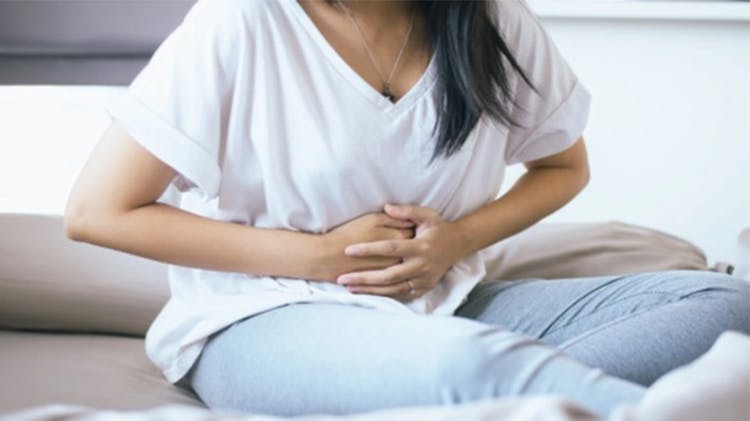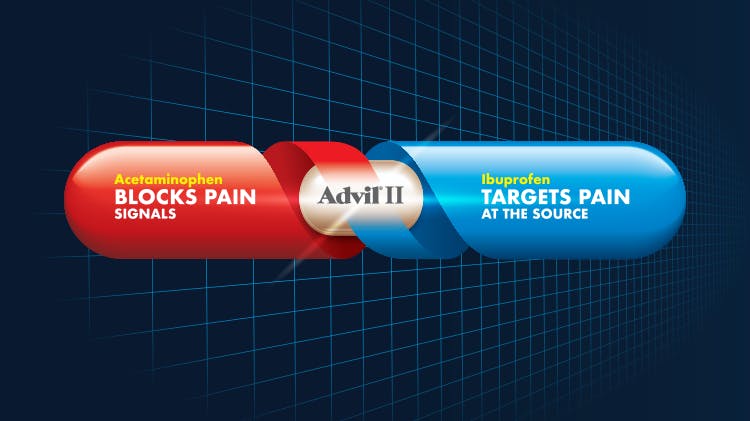Menstrual Pain Facts & Stats

Menstrual Pain Facts & Stats
Period pain, or dysmenorrhea, is a common experience for many during menstruation.1 Explore menstrual pain facts and statistics below that you can share with your patients.
Who does menstrual pain affect?
Over 50% of people who menstruate experience some pain with their period.2 In fact, pain is the most common problem that people complain of during their menstrual cycles.2
Primary dysmenorrhea vs. secondary dysmenorrhea
Period pain can be divided into two categories: primary and secondary dysmenorrhea.2
Primary dysmenorrhea: quick facts2
- Primary dysmenorrhea is the more common type of menstrual pain and is typically caused by uterine contractions.
- This type of dysmenorrhea can be experienced with a patient’s first period.
- In general, primary dysmenorrhea becomes less painful with age.
- The risk of dysmenorrhea is increased for those that get a period before age 11, have heavier or longer periods, experience high stress levels, or smoke.
Secondary dysmenorrhea: quick facts2
- Secondary dysmenorrhea is period pain that’s caused by an underlying health issue.
- This type of dysmenorrhea tends to last longer than normal pain from menstrual cramps.
- Secondary dysmenorrhea typically worsens with age.
- Health conditions that may be triggering secondary dysmenorrhea in your patients can include the following:2Ovarian cysts. Fluid-filled sacs on the ovary or ovaries that may cause pain during ovulation or menstruation. Uterine fibroids. Tumors growing on the wall of the uterus that are typically not cancerous but may cause patients to experience pelvic pain and vaginal bleeding between menstrual cycles. Endometriosis. A health condition in which the uterine lining grows outside of the uterus, which breaks down and bleeds in response to monthly estrogen level fluctuation. Endometriosis may cause pain and swelling.
Menstrual pain statistics
Approximately 80% of people who have periods experience menstrual pain at some point in their lifetime.3
Patients may experience menstrual pain anytime between their first period and menopause.3
The majority of people who menstruate experience discomfort during their periods, particularly on day one of menstruation.3
5% to 10% of menstruating people experience severe period pain that disrupts their lifestyle.3
Experiencing menstrual pain is often genetic.3
40% of people with periods experience menstrual pain alongside premenstrual symptoms including bloating, mood swings, tender breasts, swollen stomach, lack of concentration, tiredness, and clumsiness.3
What to know about menstrual pain
The pain that comes with a period is often felt in the form of menstrual cramps. Sometimes, the uterine contractions that cause cramps are not noticeable or only trigger mild pain or discomfort.5
Your patients may experience menstrual pain in the lower abdomen, back, or legs. They may also experience nausea, vomiting, diarrhea, headaches, and/or general discomfort alongside cramping. Heavier periods tend to trigger the experience of more intense pain.4
Severe menstrual pain should not be a normal part of every menstrual cycle. If a patient is having disruptively painful periods, suggest treating the pain so that it does not become part of the monthly experience of menstruating.4
More period facts and statistics
- Regularity varies: typical menstrual cycles last for 28 days, but every patient is different. Some patients may experience fluctuating cycle lengths from month to month, and some patients may have such regular periods that they can predict the date and time of the start of each period.5
- On average, a person in the United States will get their first period at age 12. However, any point between ages 8 and 15 is a regular age to start a period. The first period typically comes around two years after the beginning of breast development and pubic hair growth.5
- The average menstruating person gets a period for 40 years of their life.5
Find out more about menstrual pain causes and management or get an overview on menstrual pain from Haleon HealthPartner.
Learn more

How to manage menstrual pain
Understanding what products or treatment can help ease your patient's pain.
Products
Find out how our class-leading treatments can help your patients manage their everyday pain.
Join the Pain -Relief Community

A duo of MOAs that fight pain together
Ibuprofen and acetaminophen work together to help target pain directly, while blocking pain signals.
Learn more
Advil® DUAL ACTION Frequently Asked Questions
A resource to help answer common questions about Advil® DUAL ACTION.